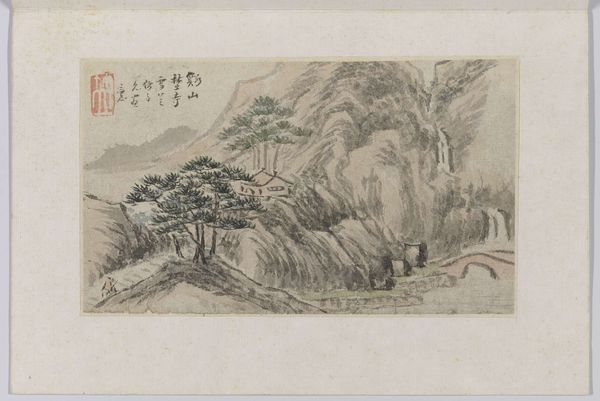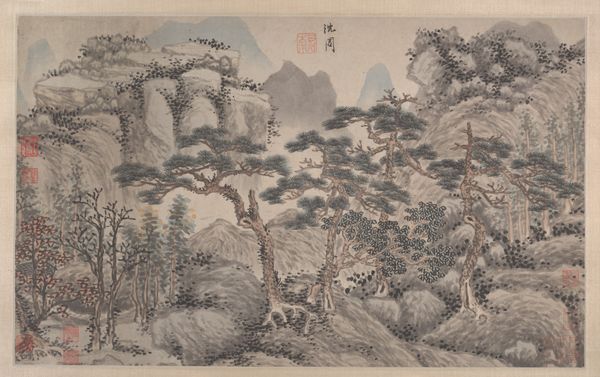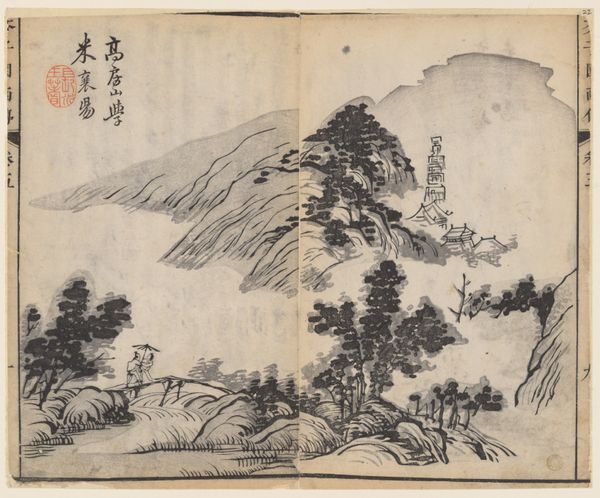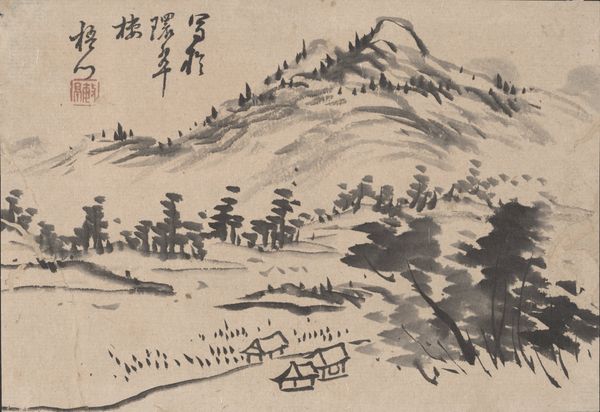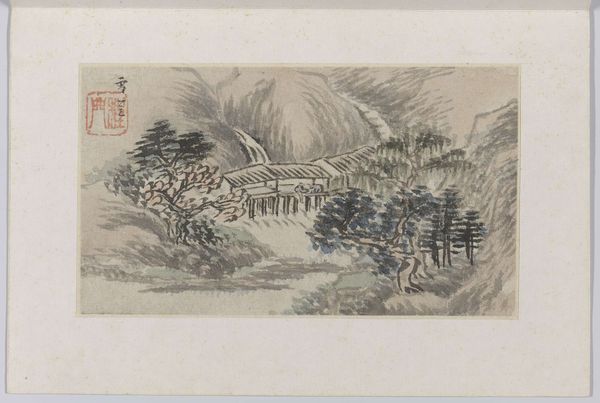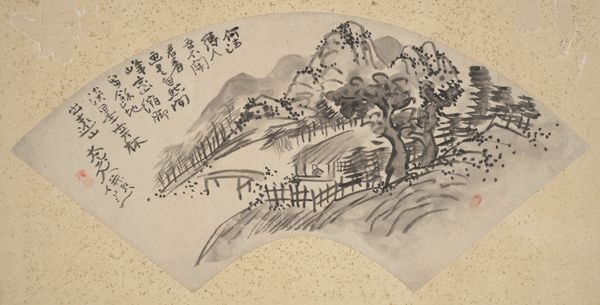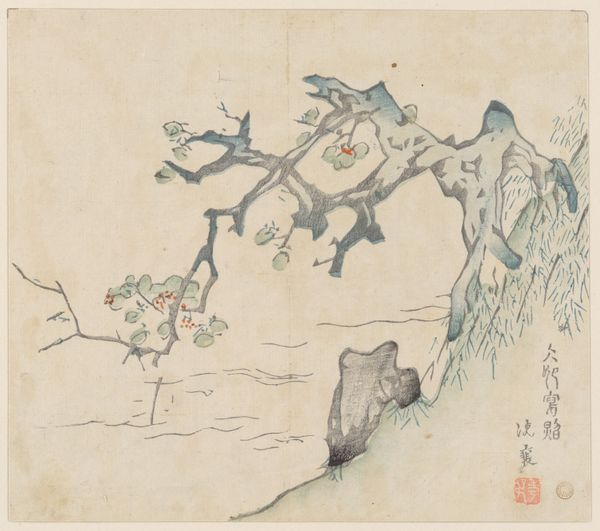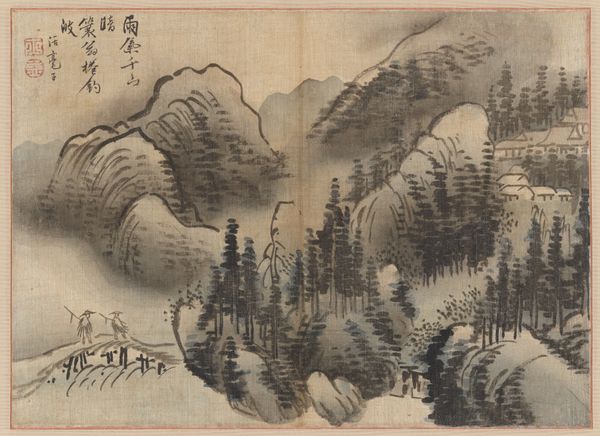
drawing, paper, watercolor
#
drawing
#
asian-art
#
landscape
#
figuration
#
paper
#
watercolor
#
coloured pencil
#
line
#
watercolor
Dimensions: height 24 cm, width 20 cm
Copyright: Rijks Museum: Open Domain
Editor: Here we have "Landschap," a watercolor and drawing on paper created sometime between 1850 and 1900 by Cheng Men. The subdued palette creates a peaceful mood, almost like looking at a memory. The composition feels very deliberate. What do you see in this piece? Curator: The composition is indeed masterful, achieved through calculated deployment of line and the delicate layering of washes. Note how the artist uses line not only to delineate form, but also to suggest texture, especially in the depiction of the rocks and foliage. This emphasis on formal elements directs our reading. Do you perceive how line and colour interact in relationship? Editor: Yes, the colour palette is restrained. The grey tones and minimal blues enhance the intricate linework; together, they create form, but they feel very dreamlike. Is there significance in its seeming incompleteness? Curator: "Incompleteness" is a western concept; let's say instead, a controlled articulation of implied form and line. The work eschews complete representationalism to foreground visual construction. Ask yourself, how does this choice affect our perception of 'landscape' as a subject? How do you understand its construction of 'depth'? Editor: It is true, focusing on composition pulls you away from reading it purely as landscape, as you're immediately considering surface treatment and line variation. Thank you; I see it much more clearly now as a formal exercise and how those formal decisions are doing a lot of work here. Curator: Exactly. It is precisely within those deliberate formal articulations that the art's significance resides. Considering formal arrangements before contextual interpretation is essential.
Comments
No comments
Be the first to comment and join the conversation on the ultimate creative platform.


